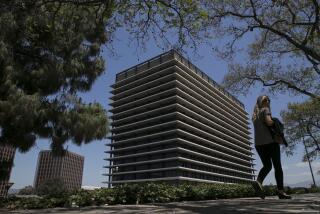The Next Great Water War
- Share via
The Local Agency Formation Commission and Valley Vote are grossly misleading the public when they say secession would not affect water and power rates in a new Valley city or a breakaway Hollywood. Los Angeles’ water rights and its exclusive authority to set rates flow from the state and federal constitutions, as well as state and federal law governing water rights. Accordingly, if the Valley or Hollywood secedes, their water rates will increase at least 23%, the current cost of water from the Metropolitan Water District, not Los Angeles’ own cheaper sources. And because they would no longer be part of Los Angeles, the new cities would have no way to fight back politically.
Early city leaders and voters recognized the importance of their exclusive rights to water from the Los Angeles River and Owens Valley. Language in the City Charter still reflects their views: “no
About 34% of L.A.’s water comes from the MWD. Because MWD water is roughly 23% more expensive than its own supplies, L.A. has always used the water to satisfy its needs after first drawing upon its less costly resources. This 23% rate increase would not be aimed at getting even with the Valley or Hollywood. Historically, the city has charged outside customers 20% to 35% more for water depending on the cost of MWD water. Universal City and West Hollywood pay the higher rate now.
It’s safe to say that Valley residents and businesses would protest a rate hike. But they would do well first to recall, before the secession vote, what happened in 1992. That year, a water “conservation” rate was imposed throughout the city. Because their lots are larger and their summer temperatures higher, Valley residents were the hardest hit. Residents were so angry that the rate became an issue in the mayoral campaign. Soon after he assumed office, Mayor Richard Riordan, who carried the Valley in the election, reconvened the committee that had recommended the rate. Once the Valley was heard, the rate was lowered.
If Valley residents voted to secede, they would have no similar influence. A water rate can be structured in a way that could adversely affect the Valley--as happened in 1992--even though the rate is the same on both sides of the Santa Monica Mountains. LAFCO’s requirement of equal rates was an attempt to prevent a rate increase in the Valley and Hollywood, but even that measure offers little protection. Participation in citywide elections is what protected the Valley in 1992. But supporters of secession are, in effect, asking Valley residents to sign off on “taxation without representation” for water, electricity and other vital city services.
There is a lot more than money at stake with water rights. In the semiarid West, water is scarce and getting scarcer every year, as the population and the economy grow. Southern California has been hard-pressed to meet water demand during droughts.
Recognizing the conflict between drought-driven water scarcity and economic development, the state Legislature passed two measures requiring findings of “substantial evidence” of available water supplies during a drought before a new development can be approved. As the competition for water intensifies in future years, these requirements will become more and more burdensome. Obviously, if secession passes, Los Angeles will have to jealously guard its water rights to ensure continued economic development. New cities would have to go elsewhere to obtain water.
Los Angeles has perfected water rights and has proved itself a tough and untiring defender of those rights. The question for those pondering secession is what the future will hold if they lose the fight for Los Angeles’ water, because the chances are they will.
More to Read
Sign up for Essential California
The most important California stories and recommendations in your inbox every morning.
You may occasionally receive promotional content from the Los Angeles Times.










